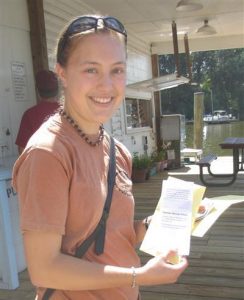A Water Resources Institute project was recently featured in “Earth and Space Science News,” (known as Eos). The newsletter is a publication of The American Geophysical Union that circulates to 61,000 subscribers internationally.

The project was one led by Steven Loheide, professor of civil and environmental engineering, University of Wisconsin-Madison. It explored the topic of urban hydrology and how cities and homeowners can control stormwater runoff with several simple modifications to their buildings and lots.
The Eos newsletter story was based on a paper published by Loheide and Carolyn Voter, a Ph.D. candidate in the Department of Civil and Environmental Engineering at UW-Madison, in AGU’s “Water Resources Research” journal. The paper was titled, “Urban Residential Surface and Subsurface Hydrology: Synergistic Effects of Low-Impact Features at the Parcel Scale.”
Based on real-world measurements from Madison, Wisconsin, the researchers developed 96 simulations to compare the effects of different green practices. They wanted to identify which combinations of practices most effectively altered surface runoff, deep drainage and evapotranspiration on residential parcels.
They categorized methods as either impervious-centric, which deal with rerouting water flow away from hard surfaces (roofs and driveways) to more pervious surfaces like a lawn; or pervious-centric, which deal with improving absorption in vegetated areas by making plantings more natural; or a holistic approach, which is a combination of the two methods.
“One surprising finding was the synergistic effect of employing multiple interventions on a lot to reduce the hydrologic impacts of urbanization,” said Loheide. “For example, if you amend soils to make them more permeable, you reduce stormwater runoff, and if you disconnect downspouts from the storm sewer, you reduce stormwater runoff. That’s not a surprise, but if you do both simultaneously, you see a greater effect than you would predict by summing up the impacts of doing each individually. Certain combinations can help you get the most bang for your buck.”

Voter stressed that improvements on single-home lots can cumulatively improve the hydrology across a city.
“The decisions that individual homeowners, developers and cities make about how a yard is managed, or where a sidewalk is placed, or how driveways are sloped seem small, but our study indicates that these decisions build on one another to have meaningful effects on larger-scale urban hydrology,” Voter said.
Local policies and incentives are ways cities can encourage these improvements. For more information, read the journal article and our previous story about the project, “A Little from a Lot.”




